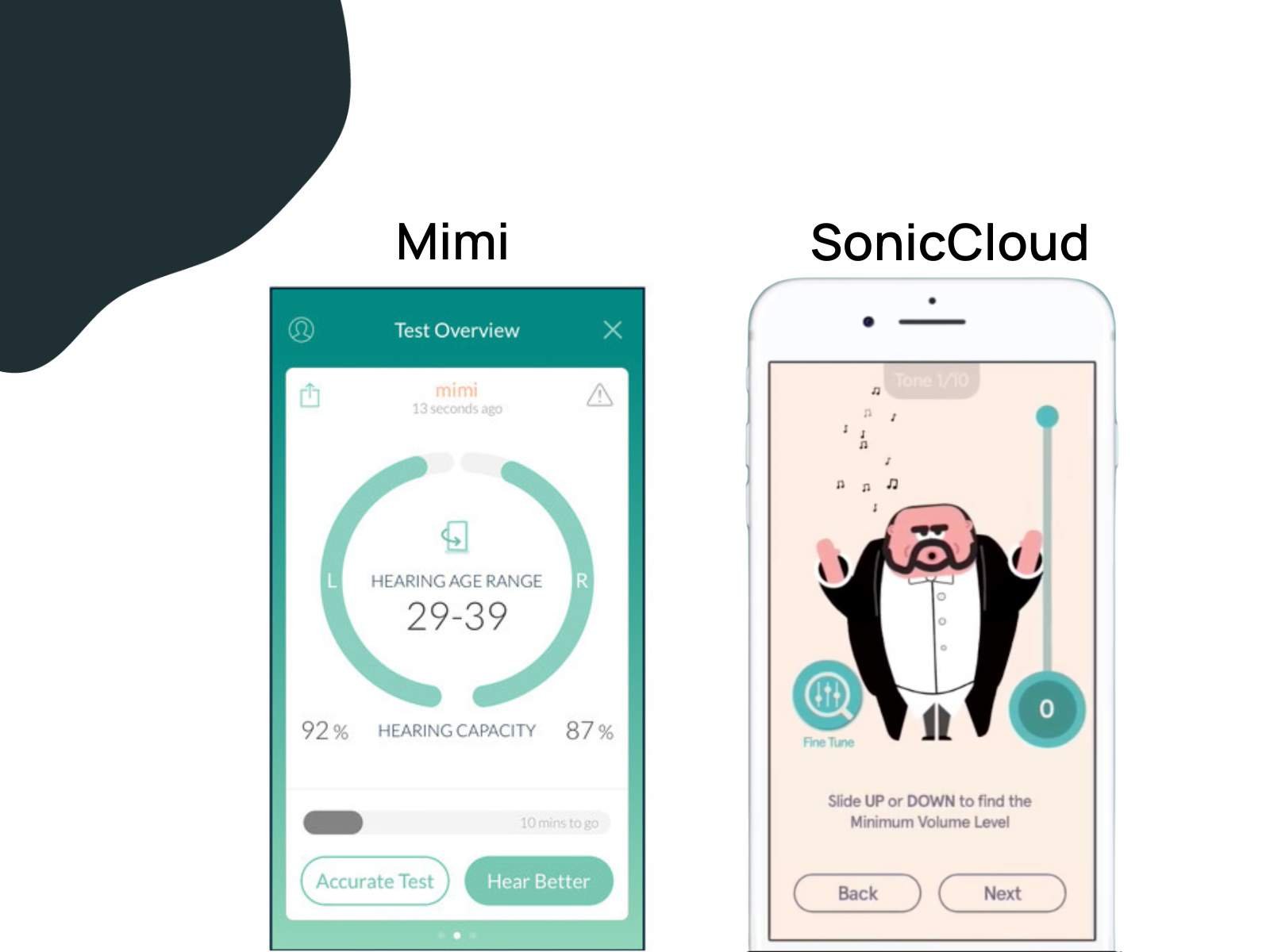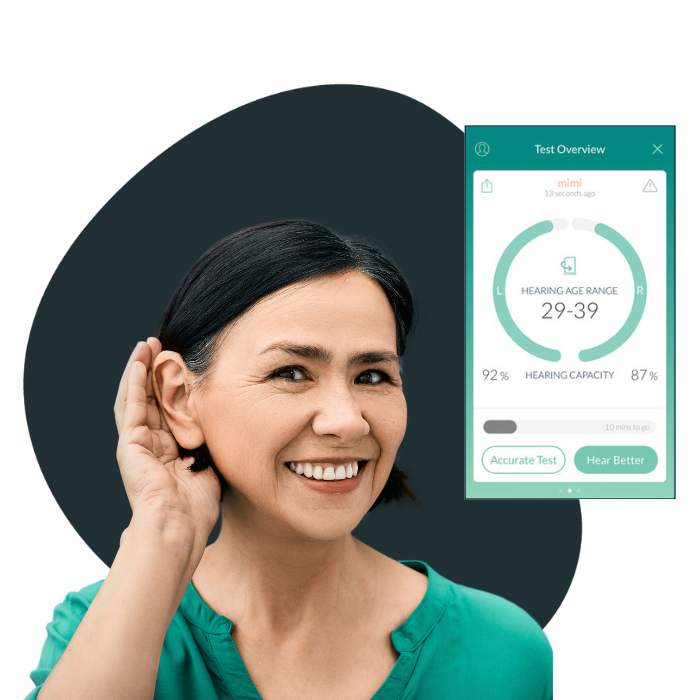Key Takeaways:
- The Hearing Number is a way to get a snapshot of your hearing in 5 minutes.
- Checking your Hearing Number over time can help you monitor changes in hearing, similar to checking blood pressure or cholesterol numbers.
- The Hearing Number is easy for you to monitor at home but does not replace a comprehensive hearing evaluation.
.png)
As an audiologist, I've come to understand the critical role that hearing plays in our overall health and well-being. Yet, it's often overlooked in our regular health check-ups, including dental visits, annual physicals, and other health evaluations. This gap in our health awareness can have profound implications, as our ability to hear not only connects us with our surroundings but also significantly impacts our social interactions, mental health, and overall quality of life.
That's why I am especially interested in the concept of a 'hearing number' - a simple, yet powerful tool for monitoring your auditory health at home. Just as we track our blood pressure or cholesterol levels, keeping an eye on our hearing number can provide invaluable insights into our hearing health, helping us identify potential issues before they escalate and ensuring our hearing health never falls by the wayside. We were also lucky enough to get some insight on this topic from a world-renowned expert and hearing number proponent at Johns Hopkins, Frank Lin, MD, PhD.
What is a Hearing Number?
It is important to note that a hearing number is not a definitive diagnosis. It is simply an indicator of how you hear certain tones in the speech range. The idea behind this metric is to provide an easier way to measure and quantify hearing loss - think 20/20 vision. The mild, moderate, and severe categories can feel too vague and seem elusive to understand. Quantifying vs. qualifying language is often easier to understand when it comes to describing hearing. For example, patients often ask what percentage of hearing loss they have. And while hearing loss is not expressed in percentages, it's that quantifiable factor that can feel easier to understand than the graphical representation of the audiogram.
Frank Lin, MD, PhD, a practicing ENT and Director of the Cochlear Center for Hearing and Public Health at Johns Hopkins, shares how the hearing number is beneficial due to its simplicity.
“One of my challenges in talking with people about their hearing is that the average person has so little context for understanding this important sense in the first place: What does ‘normal’ hearing mean? What are hertz or decibels? Even the basic categories we use are vague and slightly problematic – someone’s hearing loss might be considered “mild” or “moderate” by medical standards, but if it’s having a big impact on someone’s life it’s not mild or moderate to them! So, while hearing connects us to the people and world around us, we don’t have the language or context we need to understand and talk about it. That’s where the Hearing Number comes in.”
What do the results of a hearing number mean? A hearing number is usually scored on a scale of 0 to 100. The lower the number, the better your hearing. The hearing number range is as follows:
- Normal hearing ranges from 0 to 20
- Mild is a number from 21 to 34
- Moderate is 35 to 49
- Moderately severe is 50 to 64
- Severe is 65 to 79
- Profound is 80 to 100
The hearing number is a way to get a quick snapshot of your hearing ability in only five to ten minutes. Dr. Lin goes on to explain that “[the hearing number] is one of the many ways that hearing care providers measure hearing, but it’s the only hearing measure used around the world irrespective of language or country. The Hearing Number measures decibels, or loudness, and represents how loud sounds have to be for them to be heard.”
The higher your Hearing Number, the louder sounds need to be for someone to hear them.
By keeping track of your hearing number over time, you can monitor any changes and track where you are with your hearing health.
Time for a Change?
Most of us are used to thinking about metrics in other aspects of health, like daily step count or blood pressure. So why should how we think about hearing be any different? Dr. Lin adds, “Our understanding of hearing is due for an upgrade: for so long we’ve thought of and talked about hearing as a binary—that someone either has hearing or hearing loss. But this stigmatizes the natural changes we all experience with our hearing over time as parts of the inner ear wear out. And stigma can make people reluctant to acknowledge or act upon any changes to their hearing.”
The number is a way to think about hearing status in a more neutral way, Lin adds. “When people know and track their Hearing Number throughout their life, it moves people toward thinking about their hearing as a dimension of their overall health, and away from thinking about hearing only in the stigmatizing context of loss or aging.”
And what’s more, as with so many other aspects of health, knowledge is power. Dr. Lin explains, “My goal with introducing the Hearing Number is for every teenager and adult around the world to understand, measure, and track their own hearing because enabling consumers to have access to health metrics (e.g., their step count, their blood pressure or blood sugar) can change behaviors at an unprecedented scale.”
The Testing Process
The process of obtaining your hearing number is simple and can be done in the comfort of your own home. Using the Mimi or SonicCloud apps offers an easy and accessible way to test your hearing number. These apps use four tones in the speech range to assess your ability to hear at these crucial frequencies. The results are then converted into a numerical value, providing a overview of your hearing health.

To use the app, you'll need to download either the Mimi or Sonic Cloud app on your phone. Use a good pair of headphones in a quiet environment. Follow the instructions on the app and then, simply listen for the four tones and follow the prompts. The results will be displayed in a numerical form, giving you an easy-to-understand representation of your hearing ability.
It is important to get your hearing tested regularly and repeat it over time. A hearing number can help identify any hearing loss early on, which can be crucial for preventing further hearing damage and improving your quality of life. If you suspect that you have a hearing loss, it is important to seek the advice of a healthcare professional.
How is a Hearing Number Calculated?
The calculation of a hearing number is the average of four frequencies: 500, 1000, 2000, and 4000 Hz. This test checks the softest sounds you can hear at these different frequencies, ranging from low to high. The results from each frequency are then averaged to generate your overall hearing number. Remember, it's not a definitive diagnosis but a metric to monitor and maintain your auditory health.
Next, let's talk about what a hearing number is and what it is not.
Limitations of a Hearing Number
While a hearing number does offer an accessible and useful snapshot of your auditory health within the speech frequency range, it is important to note that it does not provide a fully detailed audiogram. An audiogram is a graphical representation of your hearing ability across frequencies from 250 to 8000 Hz.
Hearing Loss Shape
Furthermore, the hearing number doesn't determine the type or configuration of hearing loss. For example, an individual with a sloping, high-frequency hearing loss will have a different perception than a person with a flat hearing loss configuration (i.e. even across all frequencies) or a rising hearing loss configuration (i.e. primarily low frequency hearing loss).
Hearing Aid Programming
A hearing number cannot be used to fit a hearing aid. The complexity of hearing loss and the individual needs and preferences require a more comprehensive audiological evaluation to determine the best course of treatment. Additionally, while a hearing number can detect changes in your auditory health, it cannot diagnose or treat any underlying conditions. It is always advisable to seek professional medical advice if you suspect any issues with your hearing.
Therefore, while a hearing number is a useful tool for self-monitoring and early detection of potential hearing loss, it should not replace a comprehensive hearing evaluation conducted by a professional. It is a snapshot, a potential prompt for when to seek professional advice, but not a definitive diagnostic tool. If you suspect any issues with your hearing, it is always advisable to consult with a healthcare professional.
When should you start?
Dr. Lin says the best thing to do is, “Get your hearing checked! Even though hearing is so important to our overall health, hearing is rarely tested. Most people last got their hearing tested when they were in primary school! The average American won’t have their hearing tested again until they’re 80 years old and their spouse is screaming at them to get their hearing tested because they can’t hear what they are saying.”
Final Thoughts
In conclusion, while hearing numbers can provide a practical and accessible means to monitor your auditory health, they are by no means a complete diagnostic tool. They serve as a helpful indicator of potential hearing issues, which, if detected early, could significantly enhance the quality of your life and prevent further deterioration.
However, they should never replace the comprehensive evaluations carried out by healthcare professionals. We understand that hearing loss can be daunting, but with regular check-ups and the active use of tools like hearing numbers, you can stay proactive about your auditory health. Always remember, taking the first step towards understanding your hearing health is an empowering journey towards improved wellbeing.






